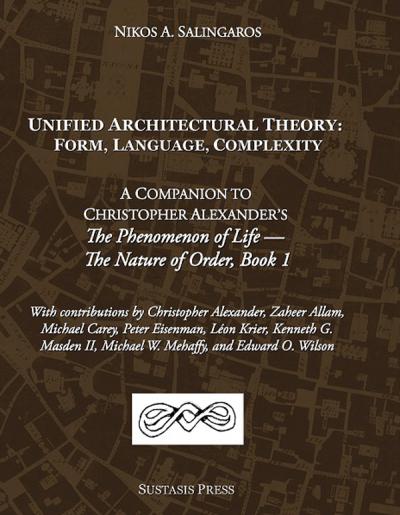When approached by Le Mauricien to write about a publication that changed my life, a few titles popped up, but interestingly most of them were from the same author, Nikos Salingaros.
As a buoyant and new graduate from high school, and relieved to have left the pedantic world of high school behind, I was brimming with enthusiasm when I finally attended university to join the other avid learners of architecture. Architecture, to me, is poetry in motion and from any problem, emerged an assemblage of shapes that are discrete entities in themselves and yet intricately linked. The set up of the architectural academic syllabus invited interest and aroused curiosity. The architectural field is highly visual, and photographs of buildings in unusual shapes excited our studio classes, but little did we know that we were taught to design for fame and not for the society.
Through the design of buildings, or cities on a broader sense, we have the power to directly or indirectly set in motion numerous changes that ultimately influenced lifestyles. Thus was born the tenet that architecture had power to change the world and from there on, we thought of ourselves as demigods, priding ourselves on being privileged of dwelling into a field that boosts our egos, project after project.
Despite our knowledge, architecture and urban design tend to belie truly sustainable principles. There is a tendency to forget that architecture, in its very essence, has the simple task of providing the solution to a number of problems while not only taking into account the penultimate objectives of the projects but also in analyzing its effects on society. Instead, the goal of our focus and our approach similarly changed when we adopted modernism and simultaneously denying millenium of cultures and traditions. This permeating lack of understanding leads to the design of building envelopes of all kinds, which, sadly, are interpreted as being of artistic or creative nature. Once that label is ingrained to particular buildings, it inevitably influences the design of others and starts a chain reaction that gives people the wrong perception of architecture. The view of the world and the mission of architecture that had appeared unquestionably grounded in concepts of truth and ethics, as well as in a social vision and commitment, has shattered, and the sense of purpose and order has faded away.
The works of Nikos Salingaros played a large part in helping me come to that realisation. With the support of leading urbanists and thinkers like Christopher Alexandre, Léon Krier, Michael Mehaffy and others, his book “Unified Architectural Theory: Form, Language, Complexity” invites challenge and retrospection on so many different levels.
His work engages and dwells on a scientific platform calling for the adoption of a more flexible frame of vision to widen our scope from the aesthetics (and economical) aspect to encompass society and the problems that our world is facing on a global scale. His book is a call for action, a call to open up to the many challenges that are being experienced, but that we have yet to concretely address. Combining the fields of mathematics, physics, architecture, urbanism and others, he creates a new level of system thinking that transcends disciplines and time.
His works, and that of his colleagues, are currently influencing change on a global level and I would recommend everybody to look into his publications. He reminds us that that the environment does not have to be either an ally or an obstacle. Our relationship with nature is symbiotic and is central to the very foundation of our being. As new leaders, designers, thinkers, professionals, we should shoulder a burden of responsibility in attempting regeneration of economy, culture, nature & society.
FORUM GUEST INVITATION : A book that changed my life
- Publicité -
EN CONTINU ↻

